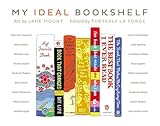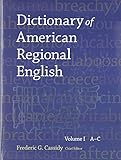
Once again, it’s time to buy a gift for the writer in your life, that fickle person who probably already has more classic novels and Moleskine notebooks than he knows what to do with. Last year’s guide was inspired by my own collection of blank notebooks and high-quality pens, beautiful gifts that I had never found occasion to use. This year’s list is inspired by my e-reader, which I received last year as a Christmas present. It took me most of the year to incorporate it into my reading routine, but now, as more of my reading happens electronically, I’m feeling nostalgic for all things bookish and old-fashioned. Judging by the market for vintage typewriters, I know I’m not the only one feeling this way. So, here it is, a list for the sentimental writer, with a couple of book recommendations thrown in for good measure.
1. A Bookshelf Portrait
 If every bookshelf is a portrait of its owner, then why not commission an actual portrait of a bookshelf? That’s what Your Ideal Bookshelf allows booklovers to do, offering hand-painted portraits of “the books that changed your life, that defined who you are, that you read again and again.” If that seems like too much pressure, you can purchase prints of other people’s ideal bookshelves, as well as drawings of ideal bookshelves organized by genre, subject, and author. Harry Potter fanatics can find portraits of the entire series, while home cooks can choose from several different shelves of culinary classics. The creators of Your Ideal Bookshelf have also produced a book, My Ideal Bookshelf, which showcases the favorite bookshelves of a variety of writers and artists, including Patti Smith, Junot Diaz, Miranda July, and Judd Apatow.
If every bookshelf is a portrait of its owner, then why not commission an actual portrait of a bookshelf? That’s what Your Ideal Bookshelf allows booklovers to do, offering hand-painted portraits of “the books that changed your life, that defined who you are, that you read again and again.” If that seems like too much pressure, you can purchase prints of other people’s ideal bookshelves, as well as drawings of ideal bookshelves organized by genre, subject, and author. Harry Potter fanatics can find portraits of the entire series, while home cooks can choose from several different shelves of culinary classics. The creators of Your Ideal Bookshelf have also produced a book, My Ideal Bookshelf, which showcases the favorite bookshelves of a variety of writers and artists, including Patti Smith, Junot Diaz, Miranda July, and Judd Apatow.
2. Bookends
Bookends are underrated. Not only do they keep books from falling off the shelf, they allow you to make a bookshelf anywhere — on a desk, in a windowsill, or atop a bedside table. Even ugly bookends end up being used, so go ahead and spring for ones in the shape of golden pigs or green poodles.
3. Typewriter-inspired clothing
The prints in fashion designer Mary Katranzou’s fall 2012 collection were partially inspired by old school office equipment, and included a cape printed with the circular numbers of a rotary phone dial, skirts printed with classic yellow #2 pencils, and most striking of all, a dress whose bodice was dominated by a red Olivetti typewriter. The runway items are hard to come by (not to mention, several thousand dollars), but you can purchase a Katranzou rotary-phone dial tee shirt here, with the proceeds going to charity.
4. An Elaborately Beautiful Book

 The recent publication of Chris Ware’s graphic novel, Building Stories, got me thinking about the many beautifully designed books that have been released in the past few years. To name a few: Anne Carson’s poem Nox; Lauren Redniss’s biography of Marie and Pierre Curie, Radioactive: A Tale of Love and Fallout; and Vladimir Nabokov’s unfinished novel-in-index-cards, The Original of Laura. In addition to being wonderful literary works, they are also beautiful objects, the kind of book that simply cannot exist in electronic form, and which readers will keep for a lifetime.
The recent publication of Chris Ware’s graphic novel, Building Stories, got me thinking about the many beautifully designed books that have been released in the past few years. To name a few: Anne Carson’s poem Nox; Lauren Redniss’s biography of Marie and Pierre Curie, Radioactive: A Tale of Love and Fallout; and Vladimir Nabokov’s unfinished novel-in-index-cards, The Original of Laura. In addition to being wonderful literary works, they are also beautiful objects, the kind of book that simply cannot exist in electronic form, and which readers will keep for a lifetime.
5. A subscription to Journal of the Month
Literary journals! There are so many of them, and so many of them are good, and almost all of them would like you to read a copy before you submit your stories to them. Journal of the Month helps writers sample a wide variety of journals by sending subscribers a different journal each month. Each month’s selection is a surprise, and you can buy subscriptions of 3, 6, or 12 months. You can also choose to receive magazines on a quarterly basis.
6. Draw It With Your Eyes Closed
 This unusual, practical, gossipy, eclectic, and highly entertaining anthology is a collection of assignments for fine arts students. But it’s unexpectedly useful for writers, too — or, at least, it was useful to me, helping me to think about the writing process in new ways. I bought if for my brother-in-law, who teaches drawing, but found myself unable to put it down after reading a couple of entries. With contributions from art teachers, art students, artists, and art professionals, some within the academic community and some without, Draw It With Your Eyes Closed delves into the creative process of artists by focusing on their art school training. If there’s an equivalent to this book from the world of creative writing MFAs, I’d love to read it, but I doubt it’d be as raucous or mischievous.
This unusual, practical, gossipy, eclectic, and highly entertaining anthology is a collection of assignments for fine arts students. But it’s unexpectedly useful for writers, too — or, at least, it was useful to me, helping me to think about the writing process in new ways. I bought if for my brother-in-law, who teaches drawing, but found myself unable to put it down after reading a couple of entries. With contributions from art teachers, art students, artists, and art professionals, some within the academic community and some without, Draw It With Your Eyes Closed delves into the creative process of artists by focusing on their art school training. If there’s an equivalent to this book from the world of creative writing MFAs, I’d love to read it, but I doubt it’d be as raucous or mischievous.
7. The Dictionary of American Regional English

 When I was growing up, my parents had a slang dictionary, which I dorkily consulted in order to learn the meanings of certain colorful insults. But I quickly found the dictionary to be more interesting when I browsed beyond the curse words. The Dictionary of American Regional English is kind of like the slang dictionary except that it is six volumes, and its contents are fifty years in the making. Based on hundreds of years of historical documents, as well as interviews taken from across the country, it is a comprehensive record of American dialect. The final volume was completed earlier this year, an event that one of its founding researchers did not live to see. Long a resource for editors and lawyers, it’s the kind of book that any word nerd could appreciate.
When I was growing up, my parents had a slang dictionary, which I dorkily consulted in order to learn the meanings of certain colorful insults. But I quickly found the dictionary to be more interesting when I browsed beyond the curse words. The Dictionary of American Regional English is kind of like the slang dictionary except that it is six volumes, and its contents are fifty years in the making. Based on hundreds of years of historical documents, as well as interviews taken from across the country, it is a comprehensive record of American dialect. The final volume was completed earlier this year, an event that one of its founding researchers did not live to see. Long a resource for editors and lawyers, it’s the kind of book that any word nerd could appreciate.
8. A Quill Pen
With the current enthusiasm for typewriters going strong, can quill pens be far behind? There are hundreds on Etsy, from turkey feather models to Hunger Games-inspired arrow-feather quills.
9. A Fireplace
According to poet Adam Kirsch, “Every writer needs a fireplace”:
On publication day, an author should burn a copy of his book, to acknowledge that what he accomplished is negligible compared to what he imagined and intended. Only this kind of burnt offering might be acceptable to the Muse he has let down.
The ultimate in old-school technology, a fireplace (or perhaps, a fire table?) allows writers to dispose of unsatisfying drafts in a truly dramatic fashion. Sometimes the trashcan icon at the bottom of your computer screen just doesn’t feel definitive enough.
10. A Place to Write
Virgina Woolf said it best when she wrote that a woman “must have money and a room of her own if she is to write fiction.” Poet Brenda Shaughnessy put a somewhat finer point on it in Poets & Writers, when she speculated that the happiness of her marriage to fellow poet Craig Morgan Teicher depended on a shared rented writing studio:
This might be the true secret of the sane poet-couple: Rent writing space. Make it as private as possible. This single thing has completely changed our lives.
As I write this, I have been displaced from my own writing desk for almost a month, courtesy of Hurricane Sandy, and without that space it has been very hard to sit down and get to work. Laptops and abundant wi-fi access have turned us all into nomads, but there’s something to be said for returning to the same place every day. How do you give someone a place to write? It could mean finding someone a cubicle in your office, renting a studio, lending a summer cottage or winter cabin, helping someone to finance a residency, or simply rearranging a shared space to make room for a bookshelf, a comfy chair, or a desk.









